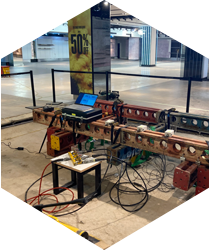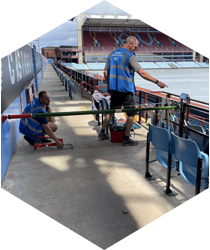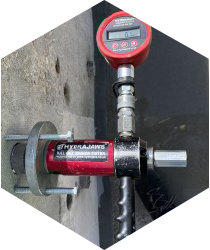Load testing is employed to establish if structural elements, construction fixings or structural repairs have sufficient capacity.

Structure Load Testing
Elements of structures can be tested locally by applying point loads, utilising the self weight of the surrounding structure to deliver a test load via hydraulic rams.
Alternatively whole floor panels or beams can be tested by constructing water tanks over the test area and filling gradually to incrementally deliver the test load.
Deflections of the elements tested are continually measured to allow the engineer to halt the test if the element begins to fail.
A safety scaffold is erected beneath the test to support the element in the event that excessive deflection occurs. And before it reaches total collapse.

Barrier Inspection and Testing
The requirements for inspection and testing of crowd control barriers in stadia are given in DCMS document ‘Guide to Safety at Sports Grounds’. Barriers are annually inspected and a risk assessment undertaken to identify barriers to be load tested. The test load is delivered using an hydraulic ram and the deflections and recoveries post test measured using dial gauges.

Bond Testing and Load Testing of Construction Fixings
The adequacy of substrates, concrete repairs and coatings can be assessed by bond-testing, using a hydraulic ‘pull-off’ tension tester. The tests are carried out after defining the test area to be loaded by over-coring.
Construction fixings can be tested in, either in direct tension or shear.

